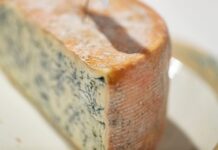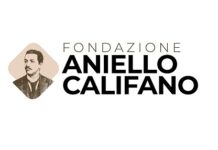Triclosan may be harmful to health, says EPA
Triclosan, a chemical used for its antibacterial properties, is an ingredient in many detergents, dish-washing liquids, soaps, deodorants, cosmetics, lotions, anti-microbial creams, various toothpastes, and an additive in various plastics and textiles. However, the safety of triclosan has been questioned in regard to environmental and human health. While the companies that manufacture products containing this chemical claim that it is safe, the United States Environmental Protection Agency (EPA) has registered it as a pesticide. The chemical formulation and molecular structure of this compound are similar to some of the most toxic chemicals on earth, relating it to dioxins and PCBs. The EPA gives triclosan high scores both as a human health risk and as an environmental risk.
Triclosan is a chlorophenol, a class of chemicals which is suspected of causing cancer in humans. Externally, phenol can cause a variety of skin irritations, but since it can temporarily deactivate sensory nerve endings, contact with it may cause little or no pain. Taken internally, even in small amounts, phenol can lead to cold sweats, circulatory collapse, convulsions, coma and death. Additionally, chlorinated hydrocarbon pesticides can be stored in body fat, sometimes accumulating to toxic levels. Long term exposure to repeated use of many pesticide products can damage the liver, kidneys, heart and lungs, suppress the immune system, and cause hormonal disruption, paralysis, sterility and brain haemorrhages.
Dioxins, PCBs, chlorophenols and many pesticides are categorized as persistent organic pollutants. In other words, they persist in the environment and accumulate to higher and higher concentrations with each step up the food chain. Virtually, every creature on earth has a measured amount of these pollutants in its body fat. Once absorbed into the fat cells, it is nearly impossible to eliminate these compounds. Triclosan is among this class of chemicals, and humans are among the animals at the top of the food chain. The health risks are considerable.
Triclosan has not been completely tested and analyzed for all health and environmental risks, but since it occurs in the category of the chemicals which are known to have the detrimental effects described here, do you want it added to products you use every day?

Triclosan Health Concerns
Ref – http://en.wikipedia.org/wiki/Triclosan
Reports have suggested that triclosan can combine with chlorine in tap water to form chloroform gas (PMID 15926568), which the U.S. EPA classifies as a probable human carcinogen. As a result, triclosan was the target of a UK cancer alert, even though the study showed that the amount of chloroform generated was less than amounts often present in chlorinated drinking waters.
Triclosan reacts with the free chlorine in tap water to also produce lesser amounts of other compounds, like 2,4-dichlorophenol (PMID 15926568). Most of these intermediates convert into dioxins upon exposure to UV radiation (from the sun or other sources). Although small amounts of dioxins are produced, there is a great deal of concern over this effect because dioxins are extremely toxic and are very potent endocrine disruptors. They are also chemically very stable, so that they are eliminated from the body very slowly (they can bioaccumulate to dangerous levels), and they persist in the environment for a very long time.
Triclosan is chemically somewhat similar to the dioxin class of compounds. Triclosan production leads to small amounts of residual polychlorinated dioxins, and polychlorinated furans which are contained in small amounts, in the products that are using it.
A 2006 triclosan study concluded that low doses of triclosan act as an endocrine disruptor in the North American bullfrog. The hypothesis proposed is that triclosan blocks the metabolism of thyroid hormone, because it chemically mimics thyroid hormone, and binds to the hormone receptor sites, blocking them, so that normal hormones cannot be utilized.
Triclosan is used in many common household products including Clearasil Daily Face Wash, Dentyl mouthwash, the Colgate Total range, Pepsodent, Softsoap, Dial, Right Guard deodorant, Sensodyne Total Care, Old Spice and Mentadent.
Manufacturers of products containing triclosan must say so on the label.
Ref – http://en.wikipedia.org/wiki/Triclosan

Fonte: healthreportuk












